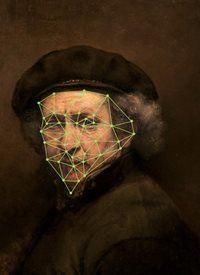 Past and future, youth and age
Past and future, youth and age
James McConnachie, Editor
I write this editorial wearing glasses. I have joined the many middle-aged readers and writers who have taken up spectacles for close work since unknown cristalleri on the Venetian lagoon island of Murano first took two convex lenses and connected them with a shaft and rivet at some point, probably, in the 1290s. So it is with a new sharpness of vision, or at least the sense of being perched on a fulcrum, that I peer forwards and behind – and this Summer issue of The Author is all about past and future, youth and age.
This theme emerges, in part, because I’ve recently discovered that the SoA represents a heartening range of ages. More than one in ten of the members joining us for the first time is under 35 years old. The average age of our newer members is fully eight years below the average age of the membership as a whole. Our youngest member has just turned 16.
It is good to know that the SoA’s future is strong. But I do not write in praise of youth: there are already plenty of publishers and prizes doing that (including the SoA’s own Betty Trask, Somerset Maugham and Eric Gregory Awards). This issue focuses on our senior members. Very senior, in one case: Candida Clark interviews Emyr Humphreys, who is our longest-serving member, and 99 years old. It must feel different to say you admire Henry James, as he does, when you were born only just after the great man died.
We also interview Piers Torday, who has just established a praiseworthy prize for debut novelists over 60, to be administered by the SoA. And we publish Robin Lloyd-Jones’s heart-warming analysis of his study of Scottish writers aged 70 and above. Among age’s many autumnal fruits, he finds, it brings with it a ‘new relationship with time’ and a ‘heightened appreciation of everything’.
 I look forward to it. I feel less sanguine about the future contemplated in our double feature on work written (created? confabulated? perpetrated?) by artificial intelligences. Andres Guadamuz, a scholar of intellectual property, considers whether or not machines can hold copyright, while novelist Nick Harkaway explores what all this means for authors. Not just for future authors, either. Because artificial intelligence and machine-writing – like ageing, like most of what we call ‘the future’ – is already part of the present. If you can see it coming, it’s already here.
I look forward to it. I feel less sanguine about the future contemplated in our double feature on work written (created? confabulated? perpetrated?) by artificial intelligences. Andres Guadamuz, a scholar of intellectual property, considers whether or not machines can hold copyright, while novelist Nick Harkaway explores what all this means for authors. Not just for future authors, either. Because artificial intelligence and machine-writing – like ageing, like most of what we call ‘the future’ – is already part of the present. If you can see it coming, it’s already here.
James McConnachie
mcconnachie.tumblr.com | @j_mcconnachie
The image at the top of the page was created by Emily Mahon, and the underlying painting by Rembrandt is reproduced courtesy the National Gallery of Art, Washington.
In this issue...
THE BUSINESS OF FAIR PUBLISHING
- Fair shares – a call to publishers Nicola Solomon
- Speaking up for authors’ audio Alice Lutyens
- Royalty audits Rafi Saville
ARTIFICIAL INTELLIGENCE
- Infinite copyright-holding monkeys Andres Guadamuz
- Collaborating with mirrors Nick Harkaway
ENDURING AUTHORS
LETTERS FROM THE ARABIC WORLD
- Truth with each book Sulaiman Addonia
- Enemies of the people Basma Abdel Aziz translated by Elisabeth Jaquette
- Moving into Cairo’s house Matthew Teller talks to Marcia Lynx Qualey
WRITERS AT WORK
- Unagented Lucy Beresford
- Doing it standing up Alice Jolly
REGULARS
- Need to know
- Out and about Clare Dudman
- To the Editor
- Booktrade news
- Broadcasting
- Notices
- Grub Street Andrew Taylor